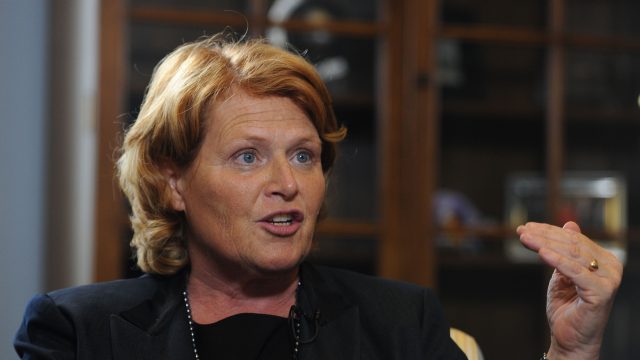In Apples-To-Apples Comparison Gender Wage Gap Pretty Much Disappears

North Dakota Senator Heidi Heitkamp has been an outspoken proponent of legislation aimed at fixing America’s supposed gender wage gap.
“Making sure women receive equal pay for equal work is a family issue and it should be treated that way,” Heitkamp said of the issue back in April. “We have made some progress, but the fact that women have to work 12 years longer than men to just make up for the pay gap is unacceptable. By short changing women, some employers are also short-changing families that could use a full salary to feed their families or help their children get medical care. It’s long overdue that we pass the Paycheck Fairness Act so that our daughters don’t have to fight for these rights – they’ll already have them.”
The problem, though, is that politicians like Heitkamp don’t use apples-to-apples comparisons to calculate the wage gap. They simply compare all men to all women, refusing to acknowledge that men and women are, you know, different and often approach their careers with different objectives in mind.
For instance, men tend to choose much more dangerous professions.
In 2012, “Ninety-two percent, or 4,045 of all on-the-job fatalities were among men,” according to Jacquelyn Smith writing for Forbes. Men, it seems, are more willing to put themselves into dangerous occupations that command higher wages. Is that a #waronwomen or just people making choices?
Here’s another fun fact about who does the hiring in America: Approximately 77% of human resources position in the country are held by women according to multiple studies.
It’s hard to believe that HR departments across the nation that are employing just 23% men (talk about a gender gap) are making anti-women decisions on wages. If the wage gap is truly the result of sexism, it’s mostly women doing the discrimination.
And then there’s this from Joanna Williams writing at Spiked:
…these headline-grabbing statistics about a smaller but still existing pay gap are used by politicians and campaigners in their handwringing over the plight of women and girls today. However, what is less well known is that such statistics are arrived at by conflating the earnings of women of all ages, all occupations, and those in part-time and full-time work. The reality is that for people aged under 40 and working full-time, the gender pay gap is around zero; since 2009 women aged 22 to 29 have actually earned more than men. Furthermore, evidence shows that as the pay gap falls first for younger people, this smaller differential sticks with each generational cohort as they age. So, if current trends continue, the pay gap should be a thing of the past in the space of some 20 years.
Our society is evolving, and as a result economic outcomes are as well.
What some in the political world imagine, for political reasons, as generational gender discrimination perpetrated by patriarchal forces is really just men and women making decisions in their own best interest. And, as the generations go by, those decisions change and produce different outcomes.
At some point, we’re going to have to admit that the lack of an equal outcome is not in and of itself evidence of discriminatory influences. But there are powerful political reasons to divide our population into victim groups to be catered to, so that sort of enlightenment is going to be elusive I’m afraid.




